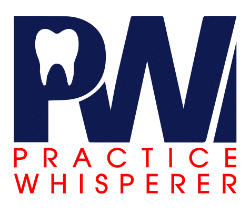Associates and Invisalign (Or any aligner treatment)
I see a lot of questions and misunderstandings about how to compensate associates who work on Invisalign cases. Here is a short attempt to try to shed some light on this dilemma from both the business and associate side.
Overhead Costs – when an associate gets paid on a procedure, there is a general overhead from supplies and labs as well. The most common is a crown, in which an average PPO office might get $700 for the crown and pay $150 lab fee, which is a 21% lab fee. Now when you look at Invisalign, a typical $5000 case, with $2000 lab fee including retainers, which is a 40% lab fee. Double the overhead cost.
Lengthy Timeframe – Another concern is, unlike crowns, Invisalign takes months or years to complete, with multiple steps. If you pay an associate for the full procedure when a case starts:
Are they going to be around to complete it?
What if someone else ends up doing some steps?
Are you okay paying someone months ahead of when the work will be done?
Paying for the total case just has too many flaws.
A better solution I am going to suggest is split Invisalign into its component parts. Pay on each as they are completed. This will remove all the typical issues surrounding paying an associate on a lengthy case. Think of an implant: you pay on the extraction, grafting, implant placement, abutment and crown all separately.
Example:
Invisalign full case – $5000
Clincheck – $500
Attachments – $500
IPR – $250
Attachment removal and Retainers – $250
Refinement/Midcourse correction – $250
Maintenance Visit – $100
One point is when you add up these fees, they should add up to your fee minus lab cost.
Internal Tracking Codes – I recommend that you embed internal tracking codes …. That way for each visit your team can know exactly what to setup for and it becomes easier to track where you are in a case. Plus, each visit has a fee attached that goes towards associate production and is paid like any other procedure. No special work required once you set the codes.
Ledger Accounting – The simplest way to do this is charge a corporate provider fee (not individual provider) for the full case, and that is how you track patient costs. Each visit that has the provider fee attached gets adjusted off that day, so the patient is not charged double.
This process can be a lot more realistic and fairer to both the associate and the office.


